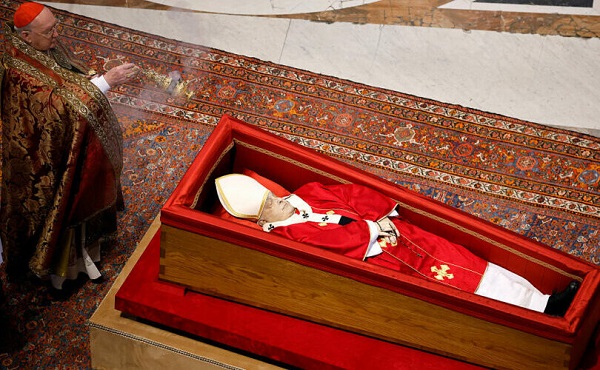Alberta
Alberta relaunch moves into Stage Two on Friday
From the Province of Alberta
Alberta moves to stage two of relaunch
Strong testing data shows active COVID-19 cases in Alberta are lower than expected, meaning stage two of the relaunch strategy can safely begin on June 12, a week sooner than expected.
Albertans can enjoy additional activities in their daily lives while the province continues to open up the economy.
“Albertans have demonstrated the care and common sense needed to move forward with our relaunch earlier than initially planned. Our data tells us our active cases are low, hospitalizations are trending downward and people are taking action to protect those most vulnerable and prevent the spread of the virus. We will continue to move forward together to overcome any tough times ahead, but responsible Albertans should be proud of the vigilance they have shown to date.”
Current data from June 8 show only 355 active cases and 44 people in hospital across Alberta. This is a decrease of almost 70 per cent in active cases since May 14 – when the province began stage one of the Alberta Relaunch Strategy. With its robust approach to testing, Alberta has performed more COVID-19 tests per capita than most other jurisdictions in the world.
As the province enters stage two of relaunch, safety remains the top priority. More businesses, sport and recreation services can open if they are ready. Some larger gatherings for seated audience events will be permitted. In all cases, public health guidance must be followed.
A new interactive map will help Albertans understand the level of risk in their community and learn about any enhanced health measures at the local level, giving additional information on what they need to do to keep themselves and their loved ones safe and protected. Currently, no communities in Alberta need locally targeted enhanced measures.
“More Albertans can now return to work and to the activities so many of us enjoy. However, I encourage you to do it safely. Think of the people in your life who may be at high risk from COVID-19 and protect all those around you as you would want your loved ones protected. Stay home if you are sick. Stay two metres apart and wear a non-medical mask if you can’t. Consider downloading the ABTraceTogether app, and wash your hands often.”
What can open with restrictions
- K-12 schools, for requested diploma exams and summer school, following guidance
- Libraries
- More surgeries
- Wellness services such as massage, acupuncture and reflexology
- Personal services (esthetics, cosmetic skin and body treatments, manicures, pedicures, waxing, facial treatment, artificial tanning)
- Indoor recreation, fitness, and sports, including gyms and arenas
- Movie theatres and theatres
- Community halls
- Team sports
- Pools for leisure swimming
- VLTs in restaurants and bars
- Casinos and bingo halls (but not table games)
- Instrumental concerts
The 50 per cent capacity limit for provincial campgrounds is also being lifted. Over the coming days, the online reservation system will be updated and sites will come online in phases. By July 1, all camping sites will be open for reservations. First-come, first-served sites may open sooner. Information on additional sites will be added to alberta.parks.ca when they become available.
Events and gatherings can be larger in stage two
Maximum 50 people:
- Indoor social gatherings – including wedding and funeral receptions, and birthday parties
Maximum 100 people:
- Outdoor events and indoor seated/audience events – including wedding and funeral ceremonies
No cap on the number of people (with public health measures and physical distancing in place):
- Worship gatherings
- Restaurants, cafés, lounges and bars
- Casinos
- Bingo halls
There is more flexibility for ‘cohort’ groups – small groups of people whose members do not always keep two metres apart:
- A household can increase its close interactions with other households to a maximum of 15 people
- Performers can have a cohort of up to 50 people (cast members or performers)
- Sports teams can play in region-only cohorts of up to 50 players (mini leagues)
- People could be part of a sports/performing and household cohort
Everyone is encouraged to follow public health guidelines and notify others in the cohort(s) if they have symptoms or test positive for COVID-19. If they do test positive or have symptoms, mandatory isolation is required.
Still not approved in stage two
- Social gatherings that exceed above listed maximums
- Regular in-school classes for kindergarten to Grade 12. Classes will resume September 2020
- Vocal concerts (as singing carries a higher risk of transmission)
- Major festivals and concerts, large conferences, trade shows and events (as these are non-seated social events and/or vocal concerts)
- Nightclubs
- Amusement parks
- Hookah lounges (permitted for food and drink only)
- Major sporting events and tournaments
- Non-essential travel outside the province is not recommended. This recommendation will not be lifted until stage three of the relaunch strategy.
The success of stage two will determine when Alberta progresses to stage three. Factors are active cases, health-care system capacity, hospitalization and intensive care unit (ICU) cases, and infection rates. For more information, visit alberta.ca/RelaunchStrategy.
Quick facts
- Relaunch stages include an evaluation and monitoring period to determine if restrictions should be adjusted. Triggers that will inform decisions include active cases, hospitalizations and intensive care unit (ICU) occupancy.
- Active cases, the percentage of positive results and the rate of infection will be monitored to inform proactive responses in localized areas of the province.
- Decisions will be applied at both provincial and local levels, where necessary. While restrictions are gradually eased across the province, an outbreak may mean that they need to be strengthened temporarily in a local area.
- Physical distancing and good hygiene are the most important measures to prevent respiratory illnesses, including COVID-19.
- Clean your hands regularly for at least 20 seconds, avoid touching your face, cough or sneeze into your elbow or sleeve, and dispose of tissues appropriately.
Alberta
Low oil prices could have big consequences for Alberta’s finances

From the Fraser Institute
By Tegan Hill
Amid the tariff war, the price of West Texas Intermediate oil—a common benchmark—recently dropped below US$60 per barrel. Given every $1 drop in oil prices is an estimated $750 million hit to provincial revenues, if oil prices remain low for long, there could be big implications for Alberta’s budget.
The Smith government already projects a $5.2 billion budget deficit in 2025/26 with continued deficits over the following two years. This year’s deficit is based on oil prices averaging US$68.00 per barrel. While the budget does include a $4 billion “contingency” for unforeseen events, given the economic and fiscal impact of Trump’s tariffs, it could quickly be eaten up.
Budget deficits come with costs for Albertans, who will already pay a projected $600 each in provincial government debt interest in 2025/26. That’s money that could have gone towards health care and education, or even tax relief.
Unfortunately, this is all part of the resource revenue rollercoaster that’s are all too familiar to Albertans.
Resource revenue (including oil and gas royalties) is inherently volatile. In the last 10 years alone, it has been as high as $25.2 billion in 2022/23 and as low as $2.8 billion in 2015/16. The provincial government typically enjoys budget surpluses—and increases government spending—when oil prices and resource revenue is relatively high, but is thrown into deficits when resource revenues inevitably fall.
Fortunately, the Smith government can mitigate this volatility.
The key is limiting the level of resource revenue included in the budget to a set stable amount. Any resource revenue above that stable amount is automatically saved in a rainy-day fund to be withdrawn to maintain that stable amount in the budget during years of relatively low resource revenue. The logic is simple: save during the good times so you can weather the storm during bad times.
Indeed, if the Smith government had created a rainy-day account in 2023, for example, it could have already built up a sizeable fund to help stabilize the budget when resource revenue declines. While the Smith government has deposited some money in the Heritage Fund in recent years, it has not created a dedicated rainy-day account or introduced a similar mechanism to help stabilize provincial finances.
Limiting the amount of resource revenue in the budget, particularly during times of relatively high resource revenue, also tempers demand for higher spending, which is only fiscally sustainable with permanently high resource revenues. In other words, if the government creates a rainy-day account, spending would become more closely align with stable ongoing levels of revenue.
And it’s not too late. To end the boom-bust cycle and finally help stabilize provincial finances, the Smith government should create a rainy-day account.
Alberta
Governments in Alberta should spur homebuilding amid population explosion

From the Fraser Institute
By Tegan Hill and Austin Thompson
In 2024, construction started on 47,827 housing units—the most since 48,336 units in 2007 when population growth was less than half of what it was in 2024.
Alberta has long been viewed as an oasis in Canada’s overheated housing market—a refuge for Canadians priced out of high-cost centres such as Vancouver and Toronto. But the oasis is starting to dry up. House prices and rents in the province have spiked by about one-third since the start of the pandemic. According to a recent Maru poll, more than 70 per cent of Calgarians and Edmontonians doubt they will ever be able to afford a home in their city. Which raises the question: how much longer can this go on?
Alberta’s housing affordability problem reflects a simple reality—not enough homes have been built to accommodate the province’s growing population. The result? More Albertans competing for the same homes and rental units, pushing prices higher.
Population growth has always been volatile in Alberta, but the recent surge, fuelled by record levels of immigration, is unprecedented. Alberta has set new population growth records every year since 2022, culminating in the largest-ever increase of 186,704 new residents in 2024—nearly 70 per cent more than the largest pre-pandemic increase in 2013.
Homebuilding has increased, but not enough to keep pace with the rise in population. In 2024, construction started on 47,827 housing units—the most since 48,336 units in 2007 when population growth was less than half of what it was in 2024.
Moreover, from 1972 to 2019, Alberta added 2.1 new residents (on average) for every housing unit started compared to 3.9 new residents for every housing unit started in 2024. Put differently, today nearly twice as many new residents are potentially competing for each new home compared to historical norms.
While Alberta attracts more Canadians from other provinces than any other province, federal immigration and residency policies drive Alberta’s population growth. So while the provincial government has little control over its population growth, provincial and municipal governments can affect the pace of homebuilding.
For example, recent provincial amendments to the city charters in Calgary and Edmonton have helped standardize building codes, which should minimize cost and complexity for builders who operate across different jurisdictions. Municipal zoning reforms in Calgary, Edmonton and Red Deer have made it easier to build higher-density housing, and Lethbridge and Medicine Hat may soon follow suit. These changes should make it easier and faster to build homes, helping Alberta maintain some of the least restrictive building rules and quickest approval timelines in Canada.
There is, however, room for improvement. Policymakers at both the provincial and municipal level should streamline rules for building, reduce regulatory uncertainty and development costs, and shorten timelines for permit approvals. Calgary, for instance, imposes fees on developers to fund a wide array of public infrastructure—including roads, sewers, libraries, even buses—while Edmonton currently only imposes fees to fund the construction of new firehalls.
It’s difficult to say how long Alberta’s housing affordability woes will endure, but the situation is unlikely to improve unless homebuilding increases, spurred by government policies that facilitate more development.
-

 2025 Federal Election19 hours ago
2025 Federal Election19 hours agoNine Dead After SUV Plows Into Vancouver Festival Crowd, Raising Election-Eve Concerns Over Public Safety
-

 Opinion1 day ago
Opinion1 day agoCanadians Must Turn Out in Historic Numbers—Following Taiwan’s Example to Defeat PRC Election Interference
-

 2025 Federal Election16 hours ago
2025 Federal Election16 hours agoMark Carney: Our Number-One Alberta Separatist
-

 C2C Journal2 days ago
C2C Journal2 days ago“Freedom of Expression Should Win Every Time”: In Conversation with Freedom Convoy Trial Lawyer Lawrence Greenspon
-

 International2 days ago
International2 days agoHistory in the making? Trump, Zelensky hold meeting about Ukraine war in Vatican ahead of Francis’ funeral
-

 International20 hours ago
International20 hours agoJeffrey Epstein accuser Virginia Giuffre reportedly dies by suicide
-

 2025 Federal Election20 hours ago
2025 Federal Election20 hours agoColumnist warns Carney Liberals will consider a home equity tax on primary residences
-

 2025 Federal Election2 days ago
2025 Federal Election2 days agoCarney’s budget is worse than Trudeau’s



